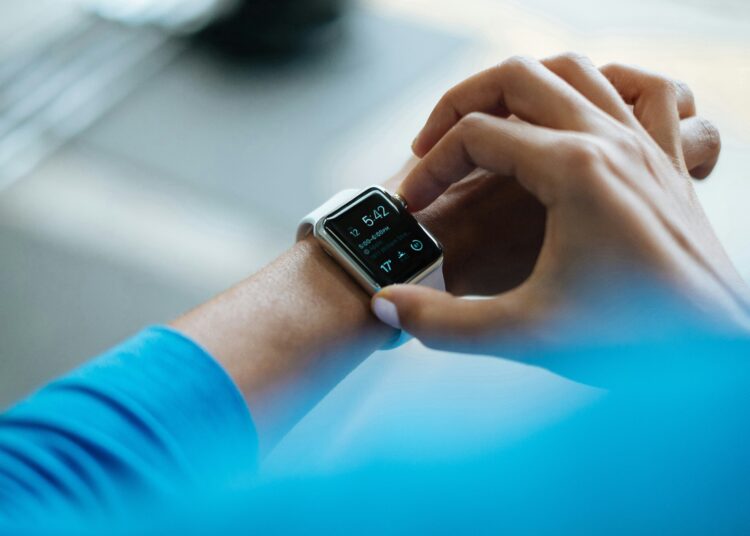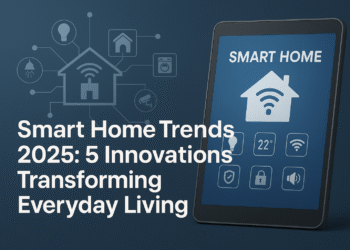AI and Wearable Tech April 2025 is shaping up to be one of the most exciting months for smart technology enthusiasts. From Meta’s powerful new Llama 4 AI to futuristic wearable health monitors, this month’s launches are driving real innovation.
In the evolving landscape of AI and Wearable Tech April 2025, user experience and health integration are leading trends that stand out across multiple product lines.
As AI and Wearable Tech April 2025 continues to roll out new devices, industry experts anticipate even stronger overlaps between personal health, productivity, and on-the-go computing.
Meta Launches Llama 4 AI Models
Meta Platforms has unveiled its newest large language models: Llama 4 Scout and Llama 4 Maverick. These state-of-the-art AI systems are fully multimodal — meaning they can process not just text, but also images, video, and audio.
Meta is positioning these models as open-source tools for researchers and developers, aiming to democratize access to cutting-edge AI. Early testers have noted dramatic improvements in task accuracy, translation speed, and content generation.
Amazon Debuts Nova Act Shopping Assistant
Amazon is rolling out Nova Act, an AI-powered assistant designed to handle web tasks like making purchases, filtering product results, and avoiding upsell prompts like insurance add-ons. While currently in research preview, it’s already being integrated into Alexa Plus, Amazon’s upgraded smart assistant experience.
This AI agent has the potential to revolutionize online shopping — not just by streamlining user tasks, but also by learning preferences and making smarter, context-aware decisions.
Starfish-Inspired Heart Monitoring Wearables
Researchers at the University of Missouri-Columbia have created a new wearable device that mimics the structure of a starfish to monitor heart health. The device flexes and adapts to skin like a natural extension of the body, delivering over 90% accuracy in detecting irregular heart activity.
According to Science Daily, the integration of AI into this tech makes it an intelligent and highly reliable tool for real-time health monitoring — ideal for at-home or remote patient care.
AI Tools Transforming Education
AI is also making its way into classrooms. A new wave of tools is helping educators automate report writing, student skill assessments, and more. The goal? Reduce workload and allow teachers to focus more on actual teaching and student engagement.
The Guardian reports that AI could help address growing concerns about teacher burnout and improve education outcomes by freeing up more time for human connection in learning environments.
Productivity Boost from AI Assistants
AI productivity tools are becoming more refined and deeply integrated into daily workflows. From summarizing emails to automating calendar management and data entry, these tools help professionals offload repetitive tasks and focus on strategy, creativity, and decision-making.
Some of the top options were recently highlighted by Zapier, which lists top-rated AI platforms for enhancing work efficiency across industries.
The Future Is Here — And Smart
As April unfolds, it’s clear that the evolution of AI and wearable technology is just getting started. Whether it’s Meta’s push for open-source innovation, Amazon’s intelligent shopping agents, or health tech inspired by marine biology — these developments are changing how we live, work, shop, and care for our health.
What’s Next in Wearable Innovation?
As we move further into 2025, wearables will continue to push the limits of what’s possible. Expect even smarter health diagnostics, personalized AI coaching, and seamless integration with smart homes and vehicles. The trend is clear — these devices are becoming central to how we live, work, and take care of ourselves.
Stay tuned to WbTrends.com for future coverage on wearable tech launches, product reviews, and AI innovations designed to make everyday life smarter and healthier.






![Toronto Pearson Airport Shooting: 1 Killed During Security Incident [April 2025] 7 Toronto Pearson Airport Shooting: 1 Killed During Security Incident [April 2025]](https://wbtrends.com/wp-content/uploads/2025/04/7B64118D-687D-4453-AD1A-88FFA777F768-350x250.png)

